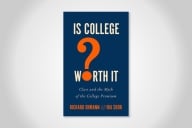You have /5 articles left.
Sign up for a free account or log in.
Back in the 90’s, when I was in grad school, I had a feminist professor who used to denigrate one school of feminism by referring to it as the “add women and stir” school. As she used the term, it referred to the idea that all you had to do to achieve gender equality in the workplace was hire more women. In truth, she argued, it would take far more than that; it would take rethinking the workplace itself. The work-focused employee model only worked if he had a stay-at-home wife; without that, something had to give.
She was right, IMHO, but the “add women and stir” school won most of the practical victories. That’s too bad, because we missed an opportunity to humanize the workplace. Instead, we’ve chosen to make family life progressively harder, with predictable effects on birthrates. As Nathan Grawe’s recent book warns us, the worst of the birthrate crash should hit higher ed around 2026 (2008 plus 18).
I was reminded of that in reading Ashley Smith’s piece in IHE about diversity at community colleges. The focus of the piece is on the hiring of chief diversity officers, with some fairly predictable carping about “administrative bloat” in the comments. (Anyone who wants to trot out that canard in reference to community colleges is referred to the Delta Cost Project. Look at the cross-sector comparisons.) Chief diversity officers are necessary and helpful, but reducing the topic to them reminds me of adding women and stirring.
My colleague Michelle Asha Cooper coined a wonderful line about the “college-ready” student. She suggested that we should focus instead on becoming student-ready colleges. She’s right.
Taking student diversity seriously means, among other things, rethinking some of the taken-for-granted ways that colleges do what they do. If we made the elimination of achievement gaps a top priority, what would that entail?
In that context, I’m heartened by the traction that Sara Goldrick-Rab’s work on student basic needs has had recently. Community colleges -- which enroll a disproportionate share of low-income students -- are starting to realize that student housing, food, and transportation are fundamental to their academic success. That sounds obvious, but I’ve seen that argument gain purchase only over the last couple of years. It has been true for a long time, but it has started to resonate at a new level only recently.
Open Educational Resources are properly about diversity, too. They enable students of limited means to participate in class on a more level playing field. Given the racial distribution of wealth in the US, that should be understood as a diversity initiative.
Odessa College, in Texas, made meaningful dents in achievement gaps by race and income in part by shortening its semesters. 8-week classes allow students to take fewer courses at a time and focus more intently on them. They also reduce the damage if life gets in the way ten weeks into the Fall. The results have been impressive; Josh Wyner, from the Aspen Institute, noted that Odessa has improved its outcomes more quickly than any other college in the country. Although it isn’t usually presented as one, I see the calendar change as a diversity initiative. It’s an adjustment of the way the college operates in order to fit more effectively the needs of the students it actually has.
I’ve heard good things about “Aid Like a Paycheck,” a program in which student financial aid refunds are distributed biweekly over the course of the semester. As the name indicates, it treats financial aid like a paycheck, enabling students to budget with some predictability. When students work part-time with volatile hours, having that reliable, steady source of income as a base can make a difference. As a side benefit, it also reduces the institutional cost of “Return to Title IV,” since the money isn’t all expended at once.
Of course, on the academic side, the move to streamline remediation can help reduce achievement gaps, too. Co-requisite models, multi-factor placement, and “boot camps” in August or January can help students pick up momentum at a critical moment. Someday, someone will make a similar breakthrough with ESL; I remain convinced that there’s room for real improvement there, but I don’t know quite what it will look like.
Online instruction is a blessing and a curse. It tends to have lower success rates than onsite teaching, though some places have made headway in reducing those gaps. (We’ve done that here, going from double digits to seven points in the last few years.) I’ve read that online instruction actually increases achievement gaps, since it tends to magnify the importance of a room of one’s own. But tossing it aside on those grounds strikes me as misguided. Online instruction fills a real need, and has become popular for very good reasons; the real challenge, I think, involves institutions getting better at it.
The common denominators to these interventions -- and the list is far from exhaustive -- are that most of them aren’t usually thought of as diversity initiatives, and every single one of them generates some opposition on campus among people who would have to change some element of what they do all day. It’s not enough to add diversity and stir. If we’re serious about improving outcomes, we have to be willing to challenge some of our most basic operating assumptions. Otherwise, we’re like the employer who expects both members of a working couple to have a wife.







